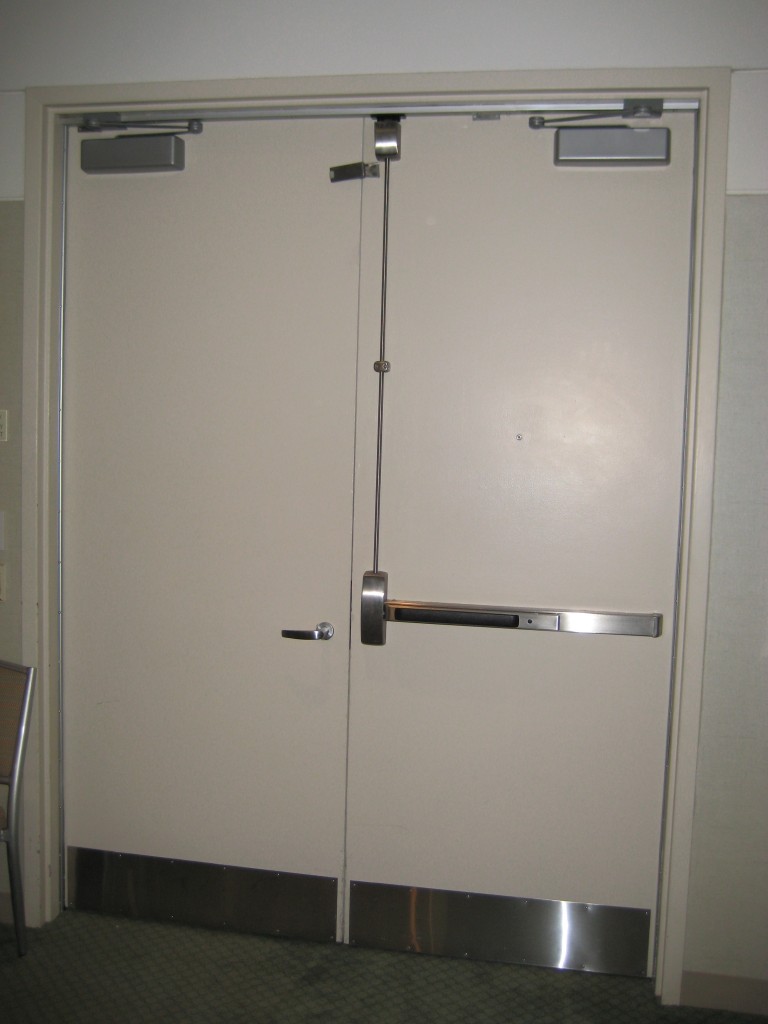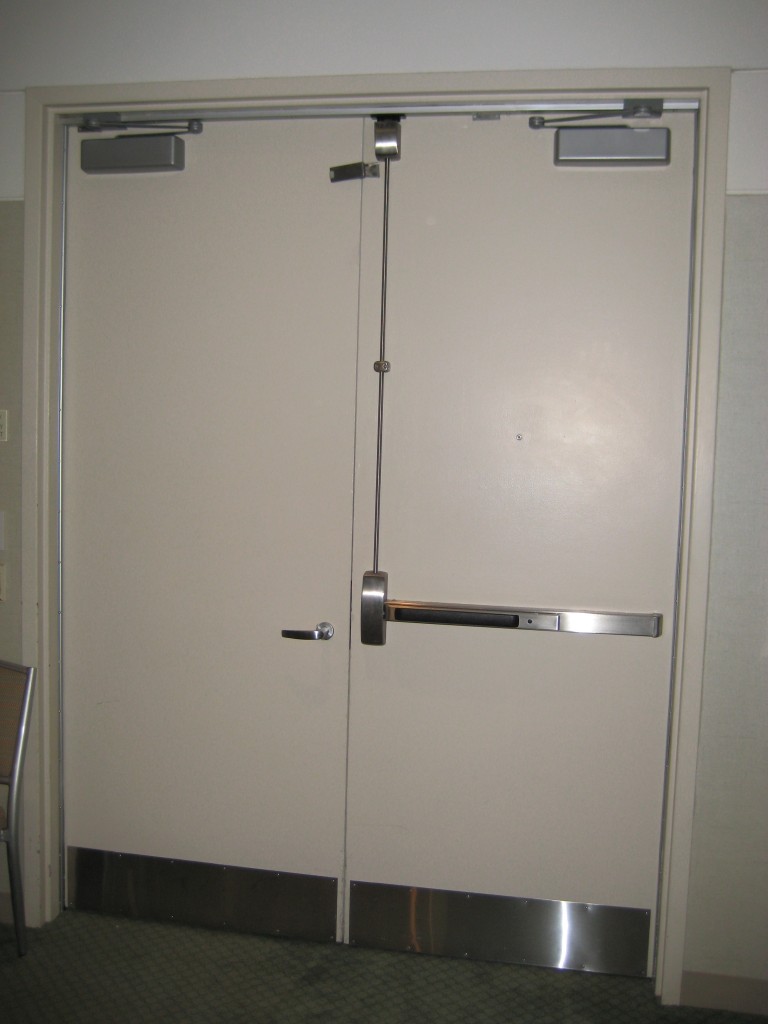 I spent 10 hours yesterday attending seminars (or waiting for the next one to start) at Build Boston, the largest regional convention and trade show for the design and construction industry. There were over 200 workshops and 250 exhibitors, and I saw lots of architect and specifier friends, not to mention enough door and hardware applications to get me through the next week of blog posts.
I spent 10 hours yesterday attending seminars (or waiting for the next one to start) at Build Boston, the largest regional convention and trade show for the design and construction industry. There were over 200 workshops and 250 exhibitors, and I saw lots of architect and specifier friends, not to mention enough door and hardware applications to get me through the next week of blog posts.
The door at right is not a fire-rated door, but it’s an unusual application. I saw at least 10 similar pairs and there may have been more. They were on many of the meeting rooms, including several with an occupant load of more than 100 people.
The pair had a surface vertical rod device (LBR) on one leaf and a mortise lockset on the other, with closers, a coordinator, and a carry bar. I watched several people exit through this pair during one of the workshops, and each one had difficulty.
Each person used the door with the exit device, which also opened the door with the mortise lock slightly. The carry bar pushed the door with the mortise lock open far enough for the latch to clear and the coordinator to engage, but the doors were binding and the operation was confusing.
The coordinator held the door with the mortise lock open a few degrees so that the door with the panic device would close first. Coordinators can be very problematic, and since everyone was using the door with the panic device, the coordinator was functioning each time.
In my opinion, this pair does not meet the intent of the codes that require panic hardware on doors serving an assembly or educational occupancy with over 100 people (or over 50 depending on the code). I’ve never seen such widespread use of this application on such a busy, high-profile facility.
What do you think?
You need to login or register to bookmark/favorite this content.






Besides the problems associated with this application, it’s just plain ugly.
If there is trim on the other side of that device, it would have to look different and the levers would not be at the same height. Ugly times two.
They may have saved around 300 bucks per opening and I guess that adds up, 10+ openings, but not worth it in my view.
Don’t like it. You’d never see something like this in one of my specs. I can’t think of too many applications where I don’t put devices on both leaves of a pair of doors. The one I can think of that I did recently was on an electric room with a pair of doors. Because it housed over 1200 AMP., an outswinging door with panic hardware was required. The size of the room didn’t require a pair of doors, but they needed the extra leaf to move larger equipment in and out. I used a mortise panic on the active leaf, with self latching flush bolts on the other. They are happy with the way it works.
It sounds as though they don’t work that well. They seem to be more of an egress/safety hazard and they are ugly. Do you really think they saved any money? The coordinator & mortise lock are at least close in price to the exit device and ongoing maintenance of a coordinator is always an issue. A second exit device would have been easier, better looking and cheaper in the long run. A set-up like this or like Andy had mentioned would be much more well suited to a “back-of-house” space such as a mechanical or electrical room than for a public function space.
When I review specifications with equally misdirected applications I find they have not been written by an architectural hardware consultant. Almost without exception, they’ve been written, with all due respect, by a well-intended architect or engineer.
I agree! There are still some architects out there who like the challenge of specifying hardware, or don’t realize that we’re here to help them. It can be pretty costly to go it alone if there’s a mistake.